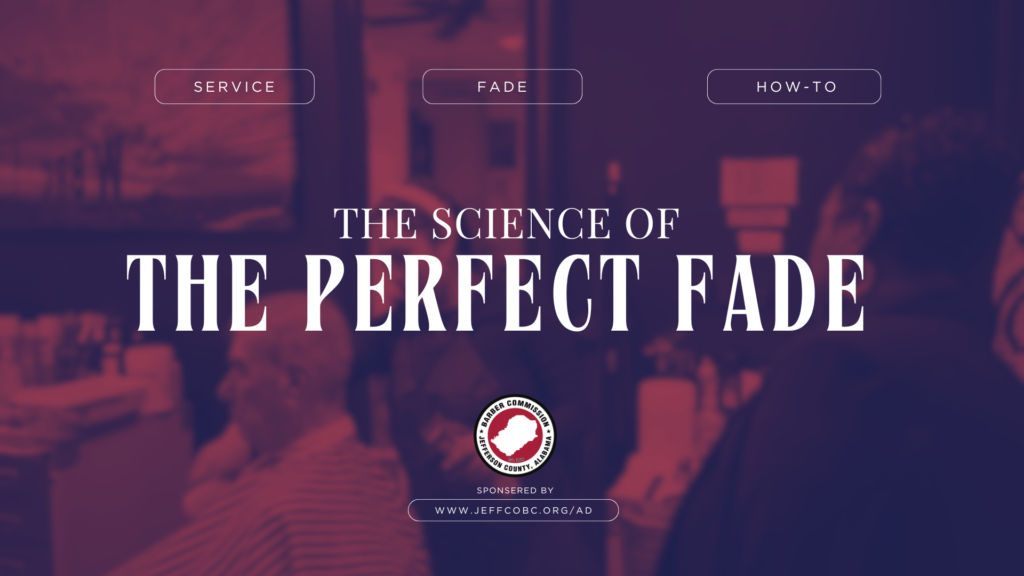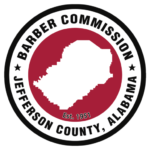
Estimated Read Time: 6 to 8 minutes.
For barbers, the pursuit of the perfect fade is something of an obsession. It’s an elusive challenge that no matter how skilled we become, we always chase. A fade isn’t just a haircut—it’s a signature of precision, a testament to control, and a mark of expertise. Every stroke of the clipper, every pass of the blade, and every adjustment of the lever contributes to a seamless transition that defines the difference between good and great.
At its core, a fade is an optical illusion. The goal is to create a smooth, almost imperceptible gradient from one hair length to another. To achieve this, barbers must blend skill, tools, and techniques in perfect harmony. Whether you’re refining your craft or looking to elevate your status as a fade specialist, these techniques will help you sharpen your approach and deliver consistent, top-tier results.
Mapping the Fade Line
Every masterpiece starts with a plan. When executing a flawless fade, the first step is to visualize and map out your fade line. Establishing this guidepost ensures symmetry and balance on both sides of the head. Using a bare shaver, define your lowest point and work your way up, following the natural contours of the scalp.
For clients with a pronounced occipital bone, a lower fade can help balance the head shape, creating a softer, more proportionate look. If you’re working on a rounder head, a mid or high fade can provide more structure and definition. No matter the approach, the key is consistency—your fade line should be even on both sides to maintain symmetry.
Every masterpiece starts with a plan. When executing a flawless fade, the first step is to visualize and map out your fade line. Establishing this guidepost ensures symmetry and balance on both sides of the head. Using a bare shaver, define your lowest point and work your way up, following the natural contours of the scalp.
For clients with a pronounced occipital bone, a lower fade can help balance the head shape, creating a softer, more proportionate look. If you’re working on a rounder head, a mid or high fade can provide more structure and definition. No matter the approach, the key is consistency—your fade line should be even on both sides to maintain symmetry.
Understanding Face Shapes
A fade isn’t one-size-fits-all. It’s a tailored cut that should enhance a client’s natural features. As a barber, part of your job is to assess which fade style will best complement your client’s head shape. A longer head with a flat occipital region will benefit from a high fade, adding dimension and contrast. A round face, on the other hand, may need a more structured fade that elongates and refines the jawline.
This is where consultation is key. Many clients walk in with a specific look in mind, but it’s your job to educate them on what will truly complement their features. While the customer’s preference always matters, offering expert guidance builds trust and ensures they leave the chair with a cut that looks great and suits their bone structure.
The Art of the Blend
Blending is the soul of a fade. Without a seamless blend, even the cleanest fade line falls flat. One of the most common mistakes barbers make is attempting to blend without the proper tools. Always use a clipper with an adjustable lever, and remember: your blend is only as smooth as your hand technique.
The most effective way to blend is through a controlled C-shape motion. Start with the lever in an open position and gradually close it as you work your way up the fade. Each pass should be deliberate, ensuring a gradual transition between hair lengths. The goal is to create an effortless gradient that flows naturally from shortest to longest without harsh demarcation lines.
Beard Fades
A fade doesn’t stop at the scalp. Integrating the beard into the overall look adds a level of polish and professionalism that many barbers overlook. If your client has facial hair, a well-executed beard fade can make or break the entire look.
The key is to start blending the beard at the shortest length near the top of the ear and gradually increase the length as you work downward. Never fade past the middle of the ear—this maintains structure while keeping the transition seamless. The goal is cohesion, ensuring the head fade and beard fade flow together in a way that feels intentional and sharp.
The Power of the Outline
A fade can be flawlessly blended, but without a crisp outline, it won’t hit its full potential. The outline is the finishing touch that sharpens the entire look, giving it a clean, professional edge.
Your focus should be on creating a sharp yet natural-looking hairline that complements the fade. When outlining, use a steady hand and precise movements to clean up the edges, keeping them symmetrical and well-defined. It’s easy to overdo this step, so be mindful of the natural hairline and avoid making it too sharp or artificial-looking.
Choosing the Right Tools
A barber is only as good as the tools they wield. When it comes to fades, quality equipment can make a world of difference. Some key essentials include:
Adjustable Clippers: The foundation of any great fade, allowing for smooth blending and gradual length transitions.
Foil Shaver: Essential for achieving skin-tight fades that last longer and stay crisp.
Detail Trimmers: Perfect for refining edges and cleaning up hard-to-reach areas.
Straight Razor: The finishing touch for ultra-clean lines and skin-tight detailing.
Quality Guards and Attachments: Ensuring uniformity and precision when blending.
Investing in top-tier tools not only improves your results but also enhances the client experience, keeping them coming back for more.
Perfecting the Fade: The Journey Never Ends
The pursuit of the perfect fade is never-ending, and that’s what makes barbering an art. Every client’s head shape, hair texture, and preference present a new challenge, pushing you to refine your craft with every cut.
Experiment with different techniques, learn from your peers, and stay open to evolving trends in the industry. The best barbers are those who never stop learning, always searching for new ways to improve their technique and perfect their fades.
If you have a signature fade technique, don’t keep it to yourself—share it with the barbering community. Growth in this industry is all about collaboration and the exchange of knowledge. The more we learn from one another, the closer we get to mastering the ultimate fade.
So next time a client sits in your chair, take your time. Approach each cut with precision, intention, and an unwavering commitment to excellence. After all, the perfect fade might be elusive, but the journey to mastering it is what makes barbering truly special.


